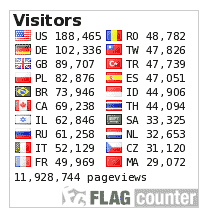Applying Mind’s Eye Strategy to Improve Students' Reading Comprehension at the Second Year Students of SMAN Binaan Khusus Dumai
Keywords:
Minds’ Eye Strategy, Reading Comprehension, Quasi Experimental designAbstract
Based on the writer’s preliminary study, it was found that the students reading comprehension was not reach the standard score. This problem was caused by some factors, for examples; the way of teaching was not suitable with the material, the level of text difficulty was too “high”. Hence, the writer was interested in carrying out the research. It was administered at SMAN Binaan Khusus Dumai. The subject of the research was the second year students, and the object of this research was the Effect of applying Mind’s Eye strategy. The design of this research was Quasi-experimental design. In collecting the data, writer used test. The population of this research was all of the second year students. The writer used cluster random sampling by taking two classes as sample; XI IPS.1 consisted of 32 students as experimental group, and XI IPS.2 consisted of 32 students as control group. To analyze the data, the writer adopted independent sample t-test formula by using SPSS 20 version. Based on the data analysis, consideration Sig (2 tailed) t0= 0,00 is lower than Sig (2 tailed) Ttable= 0.05 It means Ha is accepted and H0 is rejected. So, it can be concluded that there is a significant difference of using mind’s eye strategy to improve students’ reading comprehension at SMAN Binaan Khusus Dumai.
Keywords: Minds’ Eye Strategy, Reading Comprehension.
Downloads
References
Arikunto, Suharsimi. 2006. Prosedur Penelitian: Suatu pendekatan praktik. Jakarta: PT.Adi Mahasatya.
Creswell, John W. 2008.Educational Research: Planning, Conducting, and Evaluating Quantitative and Qualitative Research. New Jersey: Pearson Educational International.
Belcher, John. 2003. From Mind’s eye to 3D animation teaching electro magnetism with learning technology.Retrieved form EEJ, 8 (1), 98-112.
Cunningham, Andie and Ruth Shagoury. 2006.Starting with Comprehension. Portland: Stenhouse.
Gambrell and Bales. 2000. Mental Imagery and Comprehension Monitoring Performance of Fourth-and Fifth Grade Poor Readers Charles Country, Maryland, Public School”.Retrieved from Maryland University Journal, 12 (2), 46-58.
Harmer, Jeremy. 1998. How to Teach English. London: Longman.
Hartono. 2008.Statistik untuk Penelitian. Jogjakarta. Pustaka Pelajar.
Hasibuan, Kalayo and M. Fauzan Ansyari. 2007. Teaching English as a Foreign Language (TEFL).Pekanbaru: Alaf Riau Graha UNRI Press.
Heaton, J.B. 1975.A Practical Guide for Teacher of English as a Second or Foreign Language. London: Longman.
Silver, Harvey, F. Richard W. Strong, and Matthew J. Parini. 2007.The Strategic Teacher. Virginia: Thoughtful Education Press.
Published
How to Cite
Issue
Section
This is an open-access article distributed under the terms of the Creative Commons Attribution-ShareAlike 4.0 International License which permits unrestricted use, distribution, and reproduction in any medium. Users are allowed to read, download, copy, distribute, search, or link to full-text articles in this journal without asking by giving appropriate credit, providing a link to the license, and indicating if changes were made. All of the remixes, transform, or build upon the material must distribute the contributions under the same license as the original.











